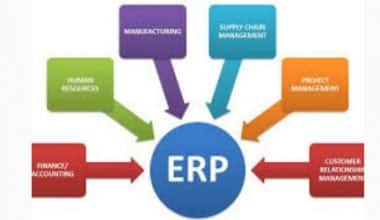The International Accounting Standards Board, or IASB, is a non-profit organization that develops global the International Financial Reporting Standards (IFRS). You could also refer to the IASB as the worldwide FASB that develops accounting principles and standards such as GAAP on a global scale.
What Does IASB Mean?
The IASB is the IFRS Foundation’s independent standard-setting body, responsible for the development and publication of IFRSs. They are also responsible for the approval of IFRS Interpretations by the IFRS Interpretations Committee.
Furthermore, the Board comprises a diverse group of specialists with current practical experience in accounting standards development, financial report preparation, auditing, and use, as well as accounting education. It’s also necessary to have a lot of geographical diversity to be a part of the board. However, the IFRS Foundation Constitution sheds more light on the precise criteria for the composition of the Board. The geographical allocation also exists, which is visible on the individual profiles.
The creation and publication of IFRS Standards, including the IFRS for SMEs Standard, is the responsibility of these board members. The Board is also in charge of approving IFRS Interpretations developed by the IFRS Interpretations Committee (formerly IFRIC). The Trustees of the IFRS Foundation appoint members through a transparent and rigorous procedure. It involves publicizing vacancies and engaging with relevant organizations.
The IASB Board
The IASB had 13 full-time Board members at the start, each with one vote. They are chosen from a pool of professionals with a mix of experience in standard-setting, account preparation and use, and academic work. According to reports, the Foundation’s Trustees completed the first stage of the second Constitution Review in January 2009; announcing the creation of a Monitoring Board and the enlargement of the IASB to 16 members, as well as giving greater emphasis to the IASB’s geographical composition.
Fifteen (15) people make up the IFRS Interpretations Committee. Its mission is to provide timely guidance on practice-related matters. The publishing of a Standard, exposure draft or final “IFRIC” Interpretation does not require a unanimous vote. However, there should be consent from nine members according to the Board’s Due Process handbook from 2008.
The IASB (International Accounting Standards Board) Process
There are six basic steps in the process of establishing IFRS. Before anything else can happen, the board must first submit a topic for discussion. The six steps begin after the generation of a conventional topic. Then, the board must develop an agenda for gathering information on the prospective standards. It should also determine how they would influence sectors and financial markets.
Secondly, a strategy for carrying out the research and identifying project collaborators must be devised.
After conducting a limited study on the new prospective standard, a discussion paper is written and publicized. This is so the public can gain a better understanding of the issues that the board is debating and begin to form their own opinions. Typically, discussion papers provide a wide overview of a broad topic.
Fourthly, the board issues an exposure draft to inform the public about the new accounting standards. The public is encouraged to provide feedback to the board on how the proposed standard would affect them if it were implemented.
Fifthly, the board creates the standard as well as the publication that will announce the standard to the general public once it is complete.
Sixthly, the IFRS standard goes public. The members of the board then convene public meetings to discuss new concerns that have arisen as a result of the newly imposed standards.
The IASB’s Function
According to the IFRS Foundation Constitution, the IASB is solely responsible for the IFRS Foundation’s technical matters, which include:
- Unfettered authority in creating and advancing its technical agenda, subject to specified Trustees and public consultation obligations
- The production and publication of IFRSs (other than Interpretations) and exposure drafts. This will be in accordance with the Constitution’s procedures.
- The approval and publication of the IFRS Interpretations Committee’s interpretations
Background and Structure of the IASB (International Accounting Standards Board)
Until April 2001, the International Accounting Standards Board was known as the International Accounting Standards Committee (IASC). The Worldwide Accounting Standards Committee (IASC) was established in 1973 as the only body with the responsibility and ability to produce international accounting standards. The IASB took over responsibility for international financial reporting in 2001. In the same year, it also took on all of the IASC’s standards (which were all prefixed with the letters “IAS”).
The IASB updated many of the standards, but it then began to produce its own standards, known as International Financial Reporting Standards (IFRS). Consequently, the name IFRS has become a catch-all term for all accounting standards (both IAS and IFRS). The structure of the IASB is as follows:
Standard Setting Process
When adopting an IFRS Standard or an IFRIC Interpretation that helps companies better implement their Standards, the IASB follows a thorough, transparent, and participatory due process, according to the IASB. Setting standards entails:
- Meetings of the public Board of Directors. The broadcast of this meeting is often live from their London headquarters
- Papers that serve as the basis for the Board’s discussions
- Following meetings, summaries of discussion and decisions become available; and
- Comments on their consultation documents are received in the form of letters.
Conceptual Framework of the IASB (International Accounting Standards Board)
The International Accounting Standards Board (IASB) isn’t a country. However, it does have a constitution in the form of the Conceptual Framework for Financial Reporting. This serves as the authoritative reference text for accounting standards development.
A theoretical foundation, a statement of principles, a philosophy, and a map are all terms that accountants use to characterize the Framework. Furthermore, the Framework paves the basis for the establishment of new accounting standards by laying out the fundamental theory of accounting. However, it is not an accounting standard. In the event of a perceived disagreement between the Framework and the specific requirements of an accounting standard, the accounting standard takes precedence.
Basically, the Framework of the International Accounting Standards Board (IASB):
- Aims to guarantee that accounting standards follow a consistent approach to problem-solving. Rather than being a collection of haphazard reactions to accounting issues.
- Assists the International Accounting Standards Board (IASB) in the creation of consistent and logical accounting standards
- Is not a standard, but rather a guide for financial statement preparers. This is to help them overcome accounting challenges that a standard doesn’t cover.
- Is a crucial and essential document that explains the purpose and constraints of financial reporting to users.
- Was originally called the Framework for the Preparation and Presentation of Financial Statements.
- Is a current topic. This is because it is in the amendment stage in collaboration with the Financial Accounting Standards Board in the United States.
Components of the IASB Framework
In general, there are 5 components in the IASB;
#1. Assets
These are resources controlled by the business as a result of past events and from which future economic benefits are expected to flow the business. On the statement of financial position, assets are classified as either non-current or current. They can be intangible, in the sense that they do not have a physical presence.
Some prevalent examples include property, plant, and equipment, as well as financial and inventory assets.
#2. Liability
A liability is an entity’s current obligation arising from past events; the settlement of which will result in an outflow of resources containing economic benefits from the entity. Liabilities are also classified as non-current or current on the financial statement.
Examples include trade payables, tax creditors, and loans. It is pretty easy to recognize a liability. Just remember the need for a present duty rather than an obligation that is payable on demand.
#3. Equity
Equity is the entity’s residual interest in its assets after an accountant deducts all of the entity’s liabilities. This definition has the consequence of acknowledging the supreme conceptual importance of identifying, recognizing, and measuring assets and liabilities. And this is because individuals theoretically understand equity as a function of assets and liabilities, i.e. a balancing figure.
Equity can also refer to the equity component of convertible loan stock, equity-settled share-based payments, discrepancies originating from increases or decreases in the NCI, group foreign exchange differences, and contingently issuable shares, to name a few examples. All of these would most likely appear in equity under the heading of Other Equity Components.
#4. Income
Income simply means gains in economic advantages during the accounting period. This is totally different from those linked to contributions from equity participants, in the form of inflows or improvements of assets or decreases of liabilities that result in increases in equity. The majority of income comes from the normal operations of the business. These include; selling goods and services.
#5. Expenses
Expenses are reductions in economic advantages during the accounting period. This is often in the form of outflows or depletions of assets or incurrences of liabilities that result in declines in equity, excluding distributions to equity participants.
Depreciation, asset impairment, and purchasing are all examples of expenses.
The Advantages of the International Financial Reporting Standards (IFRS)
Cross-border transactions and the free flow of international capital are essential to modern economies. More than a third of all financial transactions are conducted across international borders, and this number is anticipated to rise.
Furthermore, companies raise cash, conduct transactions, or have worldwide operations and subsidiaries in several countries, while investors seek diversification and investment opportunities around the world.
Previously, such cross-border activities were complicated by the fact that each country had its own set of national accounting rules. This jumble of accounting requirements often added cost, complexity, and risk to companies preparing financial statements, as well as investors and others who use those financial statements to make economic decisions.
Due to the use of national accounting standards, numbers reported in financial statements could be calculated differently. Untangling this bundle required a close examination of national accounting standards, as even minor differences in requirements can have a significant impact on a company’s reported financial performance and financial position. For example, a company may recognize profits under one set of national accounting standards but losses under another.
Benefits
- The International Financial Reporting Rules (IFRS) addresses this issue by offering a high-quality, internationally recognized set of accounting standards that promote transparency, accountability, and efficiency in financial markets all around the world.
- They improve international comparability and quality of financial data, allowing investors and other market participants to make more informed economic decisions.
- They also improve accountability by closing the information gap between capital suppliers and those to whom they have entrusted their funds. Their standards give the knowledge necessary to hold management accountable. The IFRS Standards are also crucial to authorities around the world as a source of globally comparable information.
- The International Financial Reporting Standards (IFRS) improve capital allocation by assisting investors in identifying opportunities and hazards around the world. The use of a single, trusted accounting language decreases the cost of capital and lowers the expense of worldwide reporting for businesses.
What Is the Role of the IASB?
The IASB is the IFRS Foundation’s independent standard-setting body, responsible for the development and publication of IFRSs as well as the approval of IFRS Interpretations issued by the IFRS Interpretations Committee.
What Is the Difference Between IASB and IFRS?
The only difference between IASB and IFRS is that the former is the body that is always in charge of developing and enforcing the latter.
What Is the History of IASB?
The first worldwide standards-setting group, the International Accounting Standards Committee, was established in 1973. The Worldwide Accounting Standards Board (IASB) was restructured in 2001 and became an independent international standard-setter (IASB). International norms have progressed since then.
What Is Structure of IASB?
The IASB’s governance network currently consists of 108 separate players, including the Monitoring Board, IFRS Foundation, IASB, IFRS Interpretations Committee, and IFRS Advisory Council.






